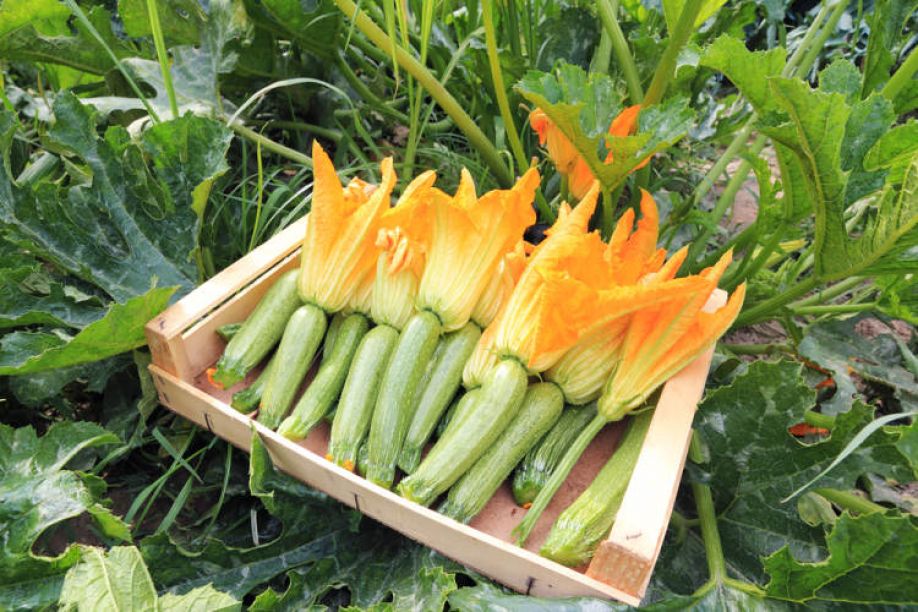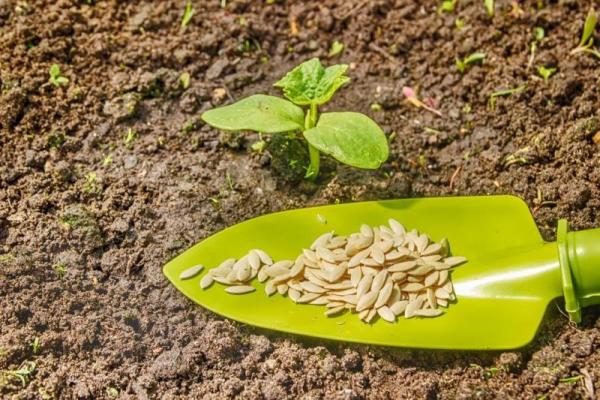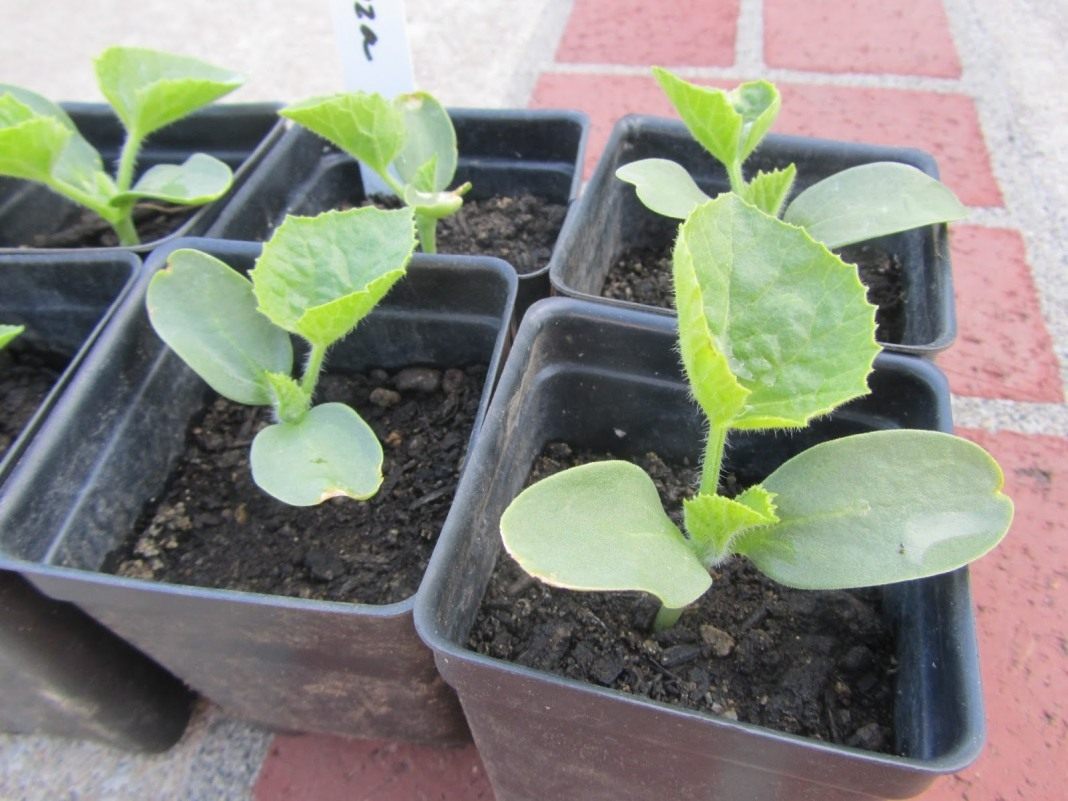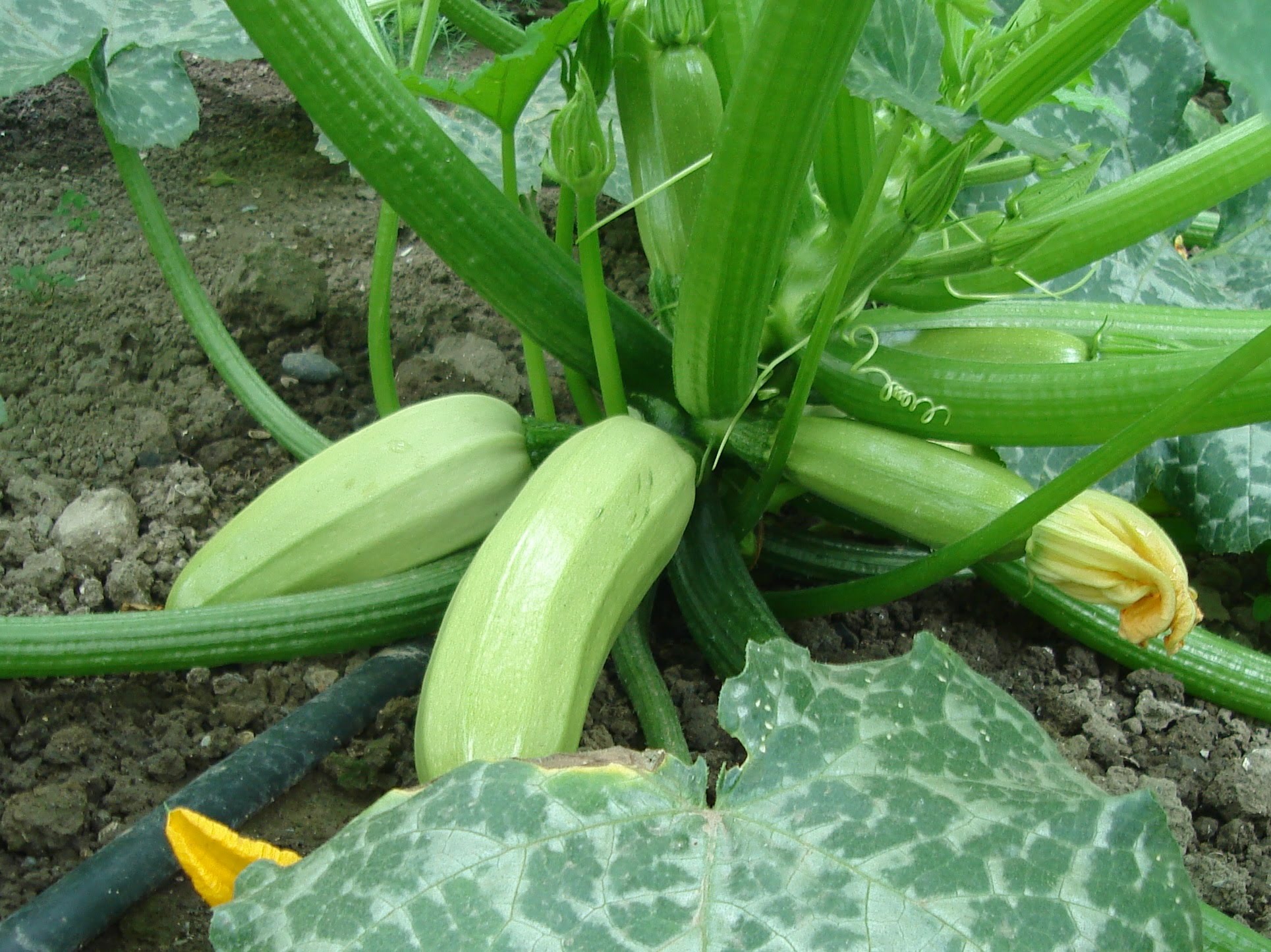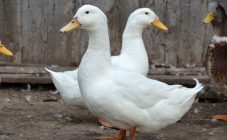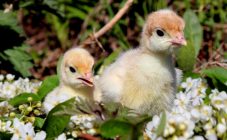Content:
Zucchini is a herb from the genus cucurbitaceae. The fruits have an oblong shape similar to a cucumber. The homeland of the squash is America. It was from there in the 16th century that Europeans brought this vegetable. It was grown in botanical gardens. And only two centuries later, people began to eat zucchini, making healthy and tasty dishes from it.
Today, at every summer cottage, you can find this culture. People actively grow zucchini of various varieties. They can vary in color, shape, ripening period and taste. However, not all farmers know how to distinguish squash seedlings from pumpkins and other vegetables. The answer to this question will be given in this article.
Types of zucchini
Most Popular:
- Kruknek.In everyday life, it was called a pumpkin-crank. It has a rounded volumetric base and a thin curved top. The color is bright yellow. The coating of the peel may vary depending on the variety. They are found both with a smooth coating and with convex blotches.
- Hybrid Delicate marshmallow. This subspecies of squash has an interesting color: the fruit is half yellow and half green. The pulp is very dense, like a squash. Therefore, this hybrid is great for baking and stewing.
- Squash.This type of squash is the easiest to distinguish from others. It has an unusual shape and firm pulp. The color ranges from pale green to bright yellow. It tolerates processing at high temperatures.
- Zucchini. The closest relative of zucchini. It differs from other species with a thin green crust and delicate white flesh. Zucchini belongs to the early maturing subspecies, and the ideal size is considered to be a fruit of about 15 cm.It is well absorbed by the body and even recommended for the first baby food.
- Round zucchini. These small, sphere-shaped fruits come in green and yellow. These zucchini are popular with chefs. For cooking, take out the pulp of the fruit, and use the rest as a container for interesting dishes.
Zucchini varieties and their hybrids
- Variety Gribovsky 37. This type of zucchini causes a special attitude among experienced gardeners. He is unpretentious to soil varieties, easily tolerates planting. In terms of herbal and taste qualities, it is the leader among its fellows. The Gribovskiy 37 variety has a rounded shape and short fruit. Zucchini are resistant to various bacterial manifestations - this is another advantage. But there is also a minus - these are vigorous bushes. It will take a lot of space to grow this type of squash. The vegetable can be stored all winter. Well tolerates long distance transportation.
- Iskander F1 variety. This is an early ripening variety. The ripening period is 40-46 days. Differs in high productivity. Even at low temperatures, it is able to set fruit. Very compact bush plant. An excellent choice for summer residents with a limited area of the site.
- Tsukesh variety. Also applies to early maturing. Unpretentious to climatic conditions, high-yielding. Well transported. Fruits can be harvested 50 days after planting. This variety absorbs little moisture, therefore it is stored for a very long time and is widely used in cooking.
- Variety Aeronaut. It is a compact shrub plant.It takes about two months before the first harvest. Popular among gardeners, as it has a large number of advantages. These include long storage, high yield, taste and ease of maintenance.
- Medusa variety. It is an early maturing hybrid. The ripening period of the first fruits is from 35-37 days. The yield is slightly lower than that of the aforementioned brethren. But this variety is resistant to strong temperature extremes, for which it is appreciated by summer residents.
Zucchini and pumpkin: the difference
Zucchini and pumpkin are related vegetables as they belong to the same species. The seeds and sprouts of these vegetables are almost impossible to distinguish.
How to distinguish squash from pumpkin seedlings
To avoid a hybrid and tasteless crop of courgettes, they should be planted away from the pumpkin. Experienced gardeners plant seedlings of these vegetables no less than 20 m from each other. This prevents over-pollination of plants.
It is possible to determine the belonging of a young sprout to a particular culture during the growing process according to the following criteria:
- Pumpkin seeds are large and round in shape, while the cotyledon leaves are identical in shape.
- Zucchini seedlings are lighter than pumpkin seedlings. It has a tall stem and looks weaker.
- Pumpkin leaves are larger, more rounded and lobed. Less embossed than zucchini.
- Pumpkin sprouts are more powerful and squat than squash sprouts.
It is worth taking note of the following features:
- Most varieties of squash have whitish or yellowish spots on the leaves. The pumpkin culture has clean leaves without splashes.
- Pumpkin flowers are located at the base and rise higher up the stem. In zucchini, they are located in the center of the bush.
- Pumpkin vines cling to the ground and neighboring plants with a mustache. In places of contact with the ground, they take root. This does not happen with squash culture. Even with bush placement, they never take root in the ground with their whiskers.
If new seeds are purchased every year, this is not a problem. In addition, the fruits will change their size and shape.
In order not to confuse pumpkin and squash seedlings, the following rules must be observed:
- When the seeds are collected and dried from moisture, they must be put in paper bags.
- Each of them must be signed: variety and year of collection. You can store pumpkin seeds for more than 8 years. But squash are not intended for a long storage period.
- Before sowing seedlings, you should purchase peat cups and make the appropriate inscriptions on them.
How to distinguish melon seedlings from zucchini
The first thing to look out for is the melon seeds. They differ from squash, have a narrow elongated shape and a yellowish tint. The base of the melon sprout is thicker and slightly shorter. The leaves are almost impossible to distinguish, but there is one peculiarity. Melon leaves have a more intense green color, and the texture is smooth and shiny. If you tear off one leaf and rub it with your fingers, a subtle characteristic aroma of the fruit will appear. These features are the key difference between these two cultures.
How to distinguish zucchini seedlings from cucumbers
- At the age of 4-6 weeks, it is already possible to distinguish these cultures from each other. Cucumber sprout has a thinner and weaker stem. It is slightly shorter in length than the zucchini shoot.
- The cucumber leaf resembles its seed. It has an oblong shape with a rounded end. The leaves are soft to the touch. There is a slight sheen, which is not typical for zucchini. Their leaves are dissected, rounded, with pointed tips.
- The cucumber will slow down in the 7-9 week period, and the squash continues to thrive.
These methods will help every gardener see the differences between zucchini and cucumber seedlings.
How to grow squash
For a high-quality harvest, it is necessary to carefully select varieties, since a fake may come across on the market. Selection criteria depend on the cultivation in certain climatic conditions. When the choice is made, you need to start preparing the seeds for planting. When using your own seeds, you need to treat them from the fungus.
The seeds are poured with hot water at a temperature of 50 degrees Celsius. Soak for a day. Then it is necessary to create a stressful environment, for this the seeds are immediately placed in cold water for a few minutes. Prepare the soil yourself. Sand is added to the ground from the summer cottage. For better thermal insulation, dilute with humus. You can also buy ready-made soil, this will facilitate the process and save time.
The time range when a grower starts to plant seedlings is very wide. Zucchini is an early ripe vegetable, so its sprouts can be planted in open ground at two weeks of age. You can plant zucchini seeds in separate pots or in a common container. Peat pots are best suited for this purpose. They will prevent damage to the root system when transplanting to the garden.
Seedlings are best placed on the sunny side of the house. This will allow her to develop correctly and quickly. The land must be loosened and regularly watered young shoots of zucchini. It is important not to forget to feed with light fertilizers.
Some time before planting on the site, the sprouts begin to harden, increasing the time spent in the open air. This is done in order for plants to better adapt to different climatic conditions. Resettlement of seedlings is not difficult. Seedlings are planted in dry ground to a depth of 4-5 cm and watered with sufficient water.
Growing zucchini is not a difficult and time-consuming process. You just need to understand the varieties and basic rules for growing seedlings. You should also learn to distinguish seedlings from different crops so as not to confuse zucchini with other vegetables.
